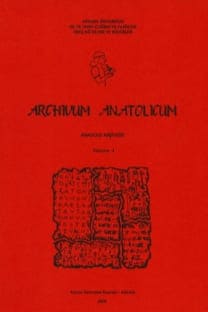“Signet of Steel”
Ludingirra was a considerable Sumerian-Ianguage poet of Babylon,
with a terminus ante quern in the reign of Hammurabi’s successor
Samsuiluna, thus ca. 1700 b.c.e. He rates as the author of two dirges or
elegies over the deaths of his father and wife respectively, which Kramer
(1963: 208-217) discovered in (he Pushkin Museum in Moscow in 1957
and subsequently edited. Ludingirra is also credited with a poem known
(in Sa nagba imuru or Arma Virumque fashion) as Lii-kas^-e-lugal-la
har-ra-an-na gin-na ‘Royal courier, begin the journey!’, preserved entire
and edited from several tablet pieces by Civil (1964). The poet instructs
the messenger to deliver greetings to his mother in Nippur, adding that “if
you do not know my mother, I shall give you some signs”. Her name is
Sat-Istar; instead of street directions Ludingirra then pours out in 42 lines
an exaltation of his mother in extravagant poetic similes (grouped into
five “signs”), concluding with a two-line clincher: “When, with the help
of the signs I have given, you stand in her luminous presence, say to her:
‘Ludingirra your beloved son greets you’!”
Ludingirra was a considerable Sumerian-Ianguage poet of Babylon,
with a terminus ante quern in the reign of Hammurabi’s successor
Samsuiluna, thus ca. 1700 b.c.e. He rates as the author of two dirges or
elegies over the deaths of his father and wife respectively, which Kramer
(1963: 208-217) discovered in (he Pushkin Museum in Moscow in 1957
and subsequently edited. Ludingirra is also credited with a poem known
(in Sa nagba imuru or Arma Virumque fashion) as Lii-kas^-e-lugal-la
har-ra-an-na gin-na ‘Royal courier, begin the journey!’, preserved entire
and edited from several tablet pieces by Civil (1964). The poet instructs
the messenger to deliver greetings to his mother in Nippur, adding that “if
you do not know my mother, I shall give you some signs”. Her name is
Sat-Istar; instead of street directions Ludingirra then pours out in 42 lines
an exaltation of his mother in extravagant poetic similes (grouped into
five “signs”), concluding with a two-line clincher: “When, with the help
of the signs I have given, you stand in her luminous presence, say to her:
‘Ludingirra your beloved son greets you’!”
___
- K ra m e r, Sam uel N oah (1963) The Sumerians. Chicago: University of Chicago Press.
- M elchert, H . C ra ig (1983) Pudenda Hethitica. Journal o f Cuneiform Studies 35: 137-145. 66 JAAN PUHVEL
- Puhvel, J a a n (1993) On the origin of Gothic ulbandus ‘cam el’. Lingüistica 33: 187-190 (Bojan Cop septuagenario in honorem oblata. Ljubljana).
- S tark e, F ra n k (1990) Untersuchung zur Stammbildung des keilschrift-luwischen Nomens. Studien zu den Bogazköy-Texten. Heft 31. Wiesbaden: Otto H arrassowiu.
- U garitica V. (1968) M ission de Ras Shamra XVI. Paris: P.U.F.
- ISSN: 1300-6355
- Yayın Aralığı: Yılda 2 Sayı
- Başlangıç: 1995
- Yayıncı: Ankara Üniversitesi
Sayıdaki Diğer Makaleler
uṣur-ša-ištar Est le Fils de Sargon, Roi de l’Ancienne Assyrie?
Some Remarks on Archive-Library Systems of Ḫattuša-Boğazköy
Geç Tunç Devri Yazı-tahtaları ve Kullanılışları: Anadolu ve Suriye’den metin kanıtları
Dorit SYMINGTONG, Cem ÇEV. KARASU
Two Spears on The Stag Rhyton in the Schimmel Collection
idinnum Kelimesinin Anlamı Hakkında Yeni Bir Teklif
Robert PAYTON, Cem ÇEV. KARASU
